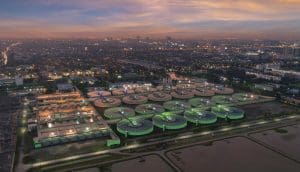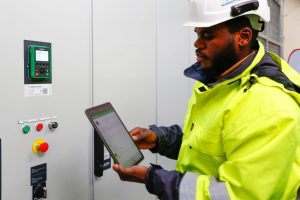In many parts of the world, consumers take the availability of water and waste water (WWW) treatment largely for granted, but yet nothing is quite so vital to the functioning of society and industry as a constant supply of safe, clean water.
Of course, the key decision makers in this segment, the consultants, engineering firms, and the operators of WWW facilities, know the challenges involved in protecting the water life cycle. They know that treatment involves many technologies, along with plenty of energy and automation to keep plants running reliably. The key stakeholders also know that shut downs must be averted by following risk mitigation best practices, including the use of Secure Power technologies such as uninterruptible power supply (UPS) solutions to back up mission-critical equipment.
If we examine issues in the WWW segment, several priorities come to the forefront. Here are four factors to keep in mind about Secure Power in the WWW segment:
- There are many technologies and processes involved—we’re not just protecting the operation of one type of plant. The segment spans a whole “lifecycle” of water use, from tapping into and treating water from lakes, rivers, and underground reservoirs to yield safe drinking water, to desalination plants that convert sea water to potable water, distribution of water to homes and industry, and of course, waste water treatment and return. Critical systems found in the sector include pumps, valves, UV treatment, and desalination systems. Overlaying the machinery are automation and process control systems, including programmable logic controllers (PLCs), supervisory control and data acquisition (SCADA) systems, and plant historians. All of these systems need to be protected, and they also need to communicate. The Secure Power difference in the sector thus spans power protection for the critical systems, as well as protection for control rooms. To simplify the architecture, “functional units” which are bundled devices that interconnect via standard protocols and use a PLC for centralized communication, can be deployed.
- Reliability and risk mitigation are top of mind. In the WWW segment, there are some power protection decisions that are driven by regulations (e.g., in the U.S. market, power protection for ultraviolet (UV) treatment systems are prescribed under the Environmental Protection Agency’s “UV Guidance Manual”), and additionally, there is a common-sense need to protect critical processes and automation systems to ensure a constant supply of safe water. For example, the servers and data in control rooms needs protection. Even a momentary loss of process control data can create gaps in the plant history that might make it difficult to troubleshoot problems or perform root-cause analysis.
- Energy management is a key secondary driver. The Roman aqueducts used gravity to move water, and while gravity is still used in WWW plants, so are many pumps, motors, other equipment, as well as automation systems that all consume energy. For example, water aeration systems are a big consumer of energy. All told, it’s estimated that energy represents about 34 percent of the cost of operating a water plant. That also means there is significant potential for energy savings. Energy saving tactics might include greater use of variable speed drives, better metering and monitoring software, properly specifying the electrical architecture, and correctly sizing the power protection.
- Within the sector, customization is sometimes a must, especially in regards to power protection for desalination plants. With these plants, there may be the need to customize a power protection solution to meet specific requirements related to factors such as humidity, salt levels, or voltages. In this part of the WWW market, Schneider Electric works closely with the design, engineering and project construction firms that build the plants, often coming up with customized UPS solutions under Schneider’s GUTOR brand.
In summary, the water and waste water market is not as basic as it seems, and should never be taken for granted. There are many types of mission-critical systems to protect, and there also is the need to protect the information generated by automation systems.
If you want to find out more about the WWW market and its needs, visit this industry page on Schneider Electric’s Web site. Additional information on Secure Power for the segment is detailed in this brochure.



Conversation
To complement the item about waste Water, it should be the waste energy around sewage plants ( just about 70 – 80% of total cost) on hundreds of valves to release pressure from the system. Great potential for savings and business development.